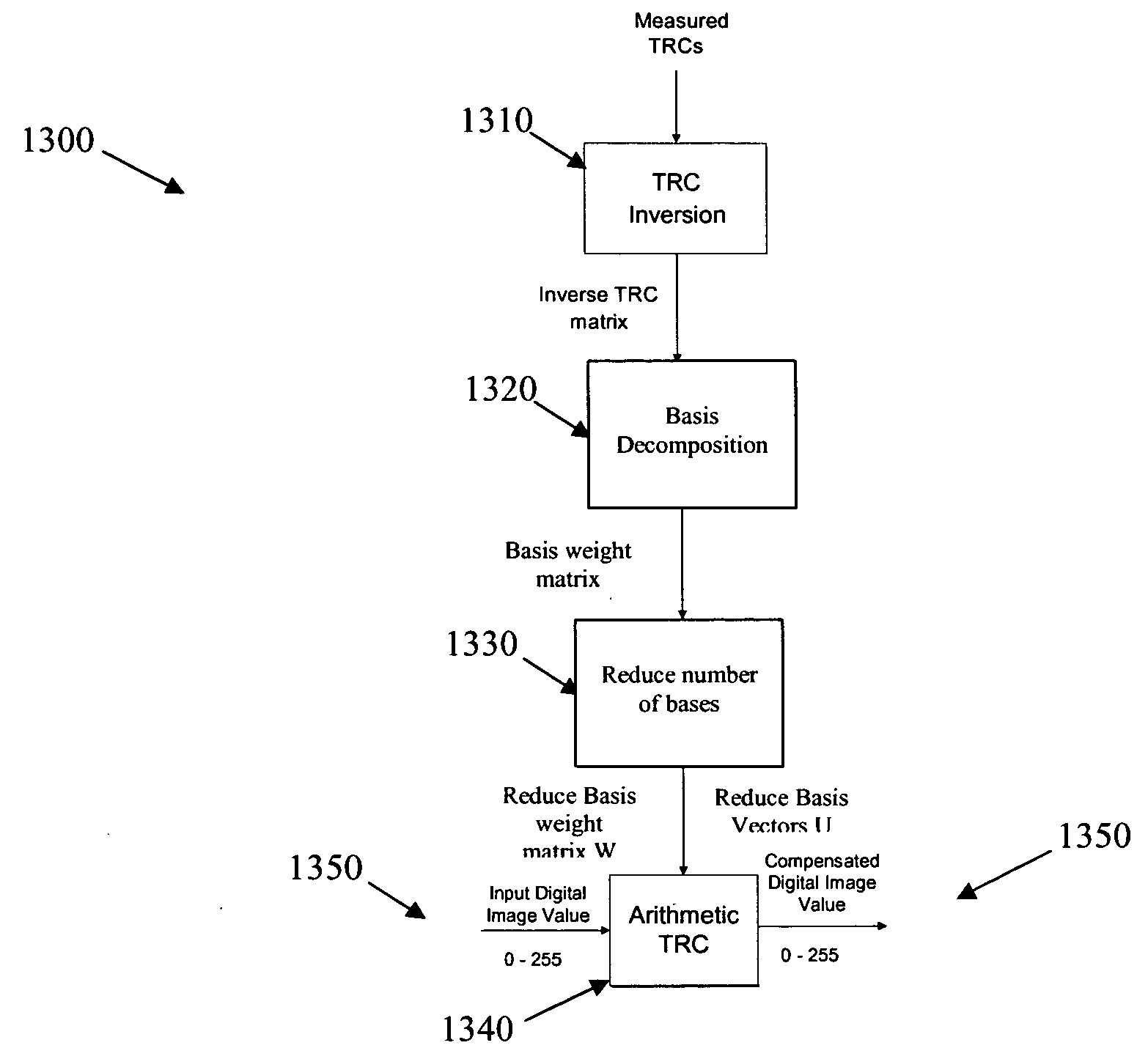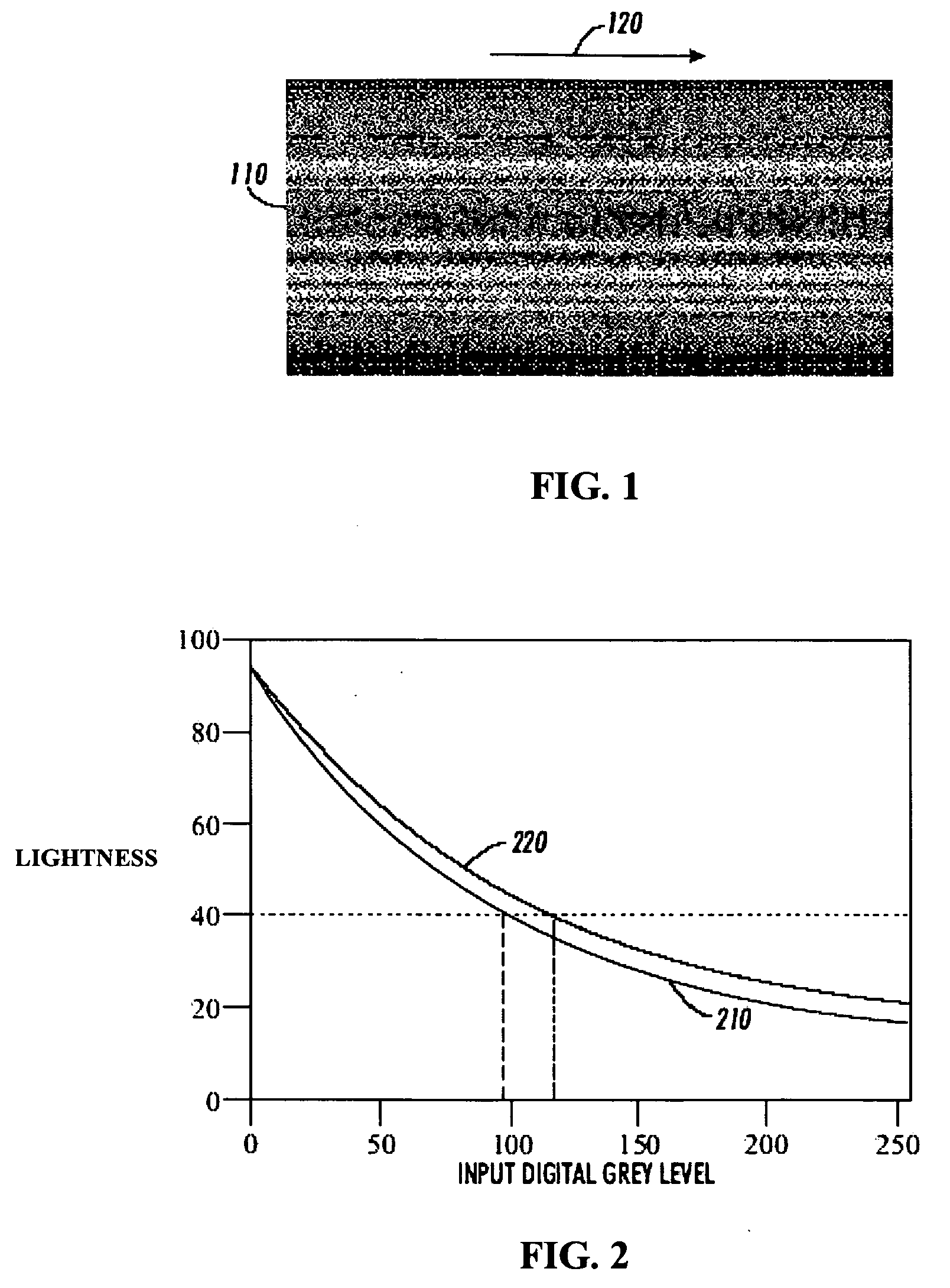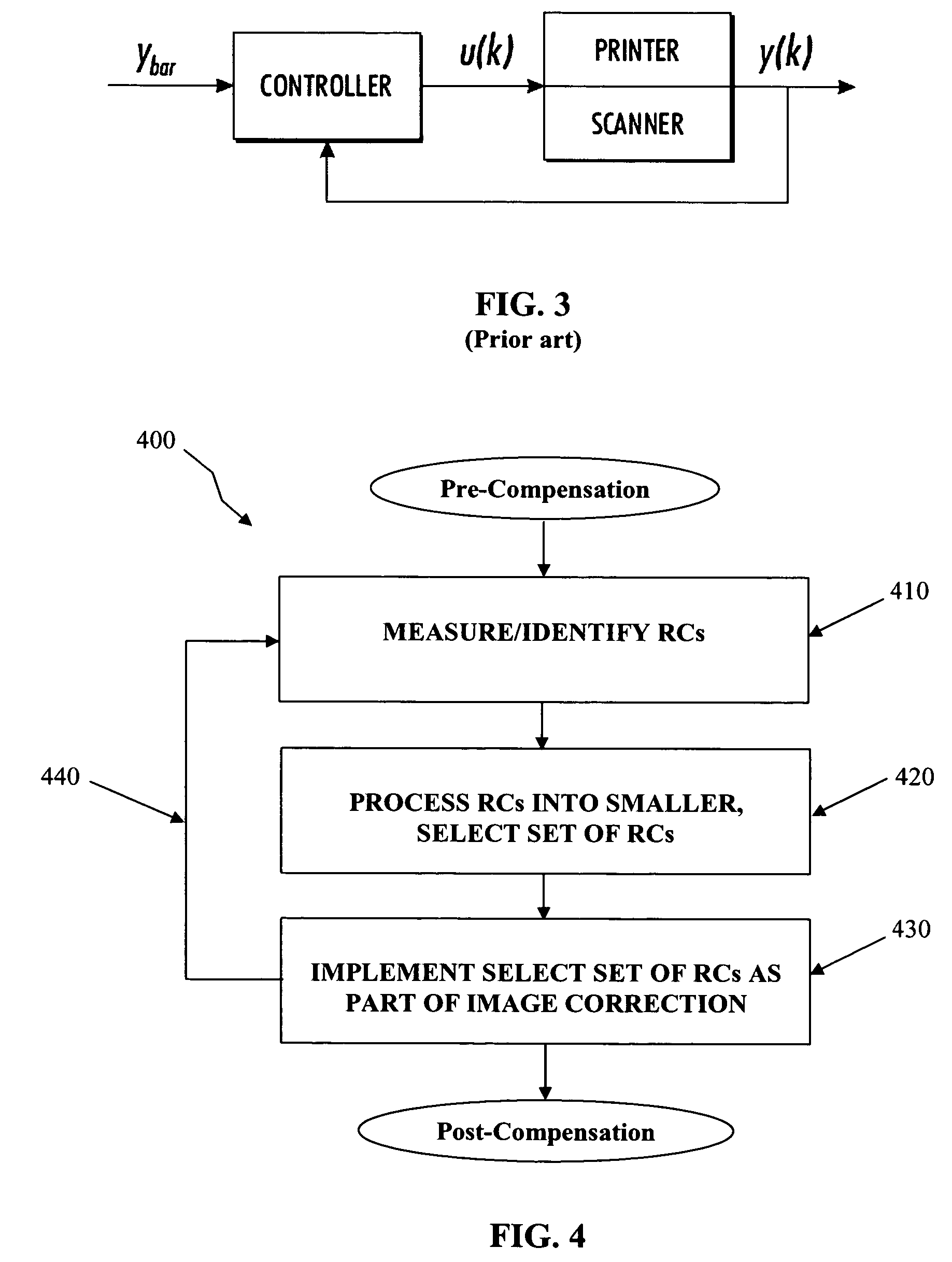Methods and systems achieving print uniformity using reduced memory or computational requirements
a technology of applied in the field of image streak compensation, can solve the problems of image non-uniformity, photoreceptor scratches, and long-standing difficulties such as achieve the effect of less memory or computational requirements, less streaks, and less nois
- Summary
- Abstract
- Description
- Claims
- Application Information
AI Technical Summary
Benefits of technology
Problems solved by technology
Method used
Image
Examples
Embodiment Construction
[0052] Using methods of the present invention the number of spatial RCs required for streak compensation are reduced, yet real-time implementation of streak compensation becomes much simpler and more cost-effective. Also, the present invention can achieve better uniformity across pixel columns within a marking engine and across multiple marking engines, and can converge faster than previous spatial RC methods. The compensation techniques described herein can be applied to both color and monochrome image forming devices.
[0053] As used herein, the term “printed gray level” in reference to a print indicates an amount of reflectance due to an amount of coverage of material between zero and 100% for the allowable range on the printed surface, although in general this material may be colored any desired color. The printed gray level may be represented as a percentage, or some optical unit (e.g., lightness).
[0054] An “input gray level” is typically a digital value represented as an integ...
PUM
 Login to View More
Login to View More Abstract
Description
Claims
Application Information
 Login to View More
Login to View More - R&D
- Intellectual Property
- Life Sciences
- Materials
- Tech Scout
- Unparalleled Data Quality
- Higher Quality Content
- 60% Fewer Hallucinations
Browse by: Latest US Patents, China's latest patents, Technical Efficacy Thesaurus, Application Domain, Technology Topic, Popular Technical Reports.
© 2025 PatSnap. All rights reserved.Legal|Privacy policy|Modern Slavery Act Transparency Statement|Sitemap|About US| Contact US: help@patsnap.com



